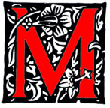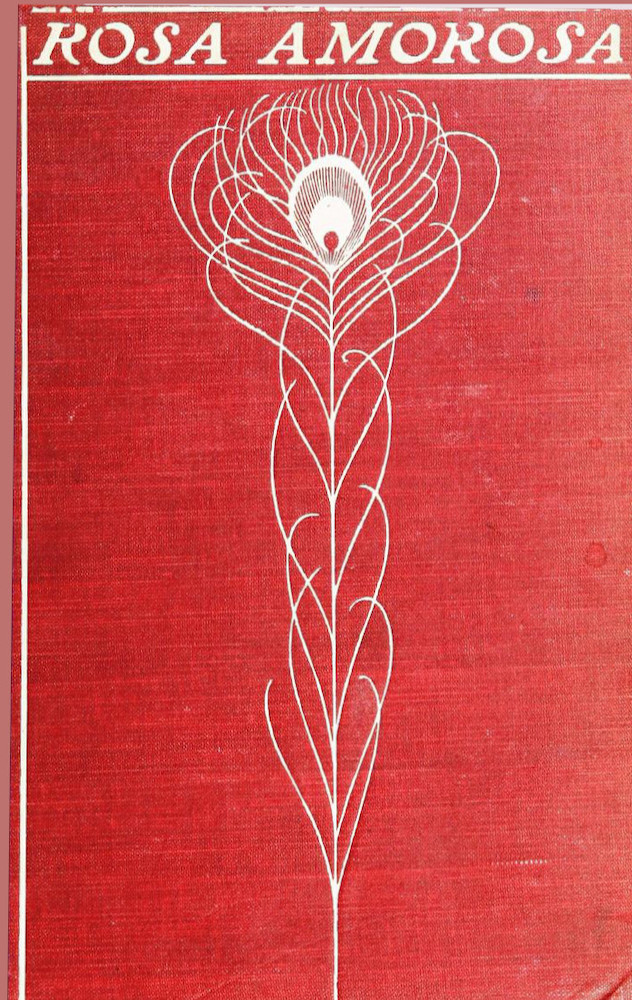
ary Chavelita Dunne Bright (pen-name George Egerton) was one of a few controversial New Woman writers who flourished in the last decade of the nineteenth century and challenged Victorian gender roles. Some other representatives of New Woman fiction included Mona Caird, Marie Corelli, Sarah Grand, Margaret Harkness, Iota, Olive Schreiner and Menie Muriel Dowie.
Chavelita (she never used her first name Mary) was born in Melbourne, Australia, in 1859. Her mother (Isabel George-Bynon) was of Protestant Welsh descent and her father (Captain John Joseph Dunne) was an Irish Catholic. Her early childhood was marked by short sojourns in Australia, New Zealand and Chile due to the occupation of her father, who served as an officer in the British Army. He was known for his book written under the pseudonym "Hi-Regan," How and Where to Fish in Ireland: A Hand-Guide for Anglers (1887). Chavelita was brought up in Ireland after the early death of her mother. At the age of eighteen, she was sent for a year to Germany to attend a Roman Catholic convent school, which provided her with "a lasting hatred for Catholicism, organized religion, and the ascetic lifestyle" (Jusová 29). She also lived briefly in New York.
In 1887, after her father's death Chavelita eloped with a married man, Henry Higginson, an Episcopalian priest, who had deserted his wife. The details of their relationship were scandalous for the time. They travelled widely and married in Detroit in 1888 (after the groom's second marriage had been formally dissolved). Next they lived in Norway until Higginson's death in 1889. During her stay in Norway, Chavelita learned Norwegian and was introduced to Henrik Ibsen, Bjornstjerne Bjornson, Knut Hamsun and August Strindberg, who critiqued familial decay and exposed in their works drastic social topics, such as adultery and venereal disease.

Portrait photograph by Elliott & Fry, from the 1930s.
[Click on images to enlarge.]
After return to London, she married Egerton Tertius Clairmonte, a minor Canadian novelist, but the marriage ended in divorce in 1901. Later she took his first name as the surname of her literary pseudonym. The first name was probably in honour of her mother, whose maiden name was George. Suffering from a permanent lack of money, Egerton decided to write short stories in order to support herself. In 1902, she married Reginald Golding Bright, a drama critic fifteen years her junior. She herself became a literary agent to George Bernard Shaw, Somerset Maugham, and others. Egerton withdrew from public literary life after the death of her son during the First Word War in 1915 and passed the final three decades of her life in relative solitude. She died in London in 1945.
Literary achievement
Egerton strikingly departed from the conventions of "ladies' fiction." Much influenced by Scandinavian literature, her first collection of short stories, Keynotes, published in 1893 under the pseudonym of George Egerton, immediately became a literary success, although it received a lot of both praise and condemnation for its radical feminist tone. For a short time Egerton became one of the best-known widely read New Woman writers. The stories, which frankly explored female sexuality and the psychological states of women, sold more than six thousand copies in the first year of publication and were translated into several languages. The book was an important contribution to the so-called New Woman fiction, which appeared in England in the 1880s and 1890s. In 1894, she published another collection of short stories, Discords in which she described women protagonists attempting to break free from rigid Victorian sexual norms. In 1897 and 1898, two more collections of stories were published, Symphonies and Fantasias, respectively, but did not receive good reviews. This was partly due to the scandal of Oscar Wilde who had a homosexual relationship with Lord Alfred "Bosie" Douglas. Wilde was convicted for "gross indecency" in 1895. Egerton was closely associated with Wilde and shared his critical enunciations of middle-class morality. His fall contributed to the loss of popularity for George Egerton and other "New Woman" writers who created transgressive literature. Nevertheless, Thomas Hardy acknowledged the influence of Egerton's work on his own, in particular on the construction of his neurotic "New Woman" character, Sue Bridehead, in Jude the Obscure.

The book cover, in an abstract but still
rather provocative Art Nouveau style.
Egerton also published two novels, the most successful was The Wheel of God (1898), written in the style of Charlotte Brontë's bildungsroman Jane Eyre (1847). The novel's protagonist, Major Desmond was based on memories of her father, an irresponsible gambler and drinker, Captain Dunne. The novel can also be read as a kind of inspiration for James Joyce's A Portrait of the Artist as a Young Man. Her second novel, Rosa Amorosa: The Love-Letters of a Woman (1901) is epistolary and largely autobiographical. In 1905, Egerton published her last collection of short stories, Flies in Amber. In 1898, she translated the first English-language edition of Knut Hamsun's novel Hunger (1890). By 1905, interest in her feminist short stories had significantly waned. Then Egerton turned occasionally to playwriting, but was not successful. Her plays include the comedy, His Wife's Family (1908), The Backsliders (1910) and Camilla States Her Case (1925).
Altogether George Egerton wrote four short story collections, two novels, three plays and was the translator of several books and theatre scripts. It was only over the past two decades that witnessed a resurgence of interest in Egerton's fiction, although she is still much less recognised than other New Woman writers like Grand, Schreiner and Caird.
The New Woman movement
George Egerton's short stories published in Keynotes and Discords were closely associated with the New Woman movement although she constantly repudiated this label (Heilmann 44) and insisted that she was not a feminist (Ledger 188). The New Woman fiction emerged in England in the late nineteenth century, challenging traditional gender roles and promoting women's independence, education, and participation in public life. Praised as a pioneer who presented the "terra incognita" of women's inner life, she was one of the most innovative and experimental writers of the late Victorian period. Egerton treated female sexuality with unusual frankness. She employed the stream of consciousness technique in many of her short stories long before Modernist authors. She also departed from a worn-out Victorian realism, avoided linear plots and experimented with new modes of expression to capture the New Woman's consciousness. Egerton can be considered as one of the precursors of modern short story. Her elliptical and impressionistic fiction revealing the inner emotions of female characters, anticipated twentieth-century Modernism. As Gerd Bjørhovde points out,
Her deliberate break with a conventional chronological narrative and her consistent use of an episodic, impressionistic technique which put more emphasis on "inner" realism than on outward realities and fact, seem to have struck her contemporaries as not only new and daring, but downright provoking, too. But her choice of topics seemed equally shocking: alcoholism, prostitution, promiscuity. [129]
Egerton was heavily influenced by the Scandinavian authors, particularly by Knut Hamsun and August Strindberg. She also had a particular fascination with the German philosopher Friedrich Nietzsche, and is credited with the first mention of Nietzsche in English literature in her 1893 short story collection, Keynotes. Her female characters were modelled on Nietzsche's Dionysian woman, a symbolic representation of the primordial, life-affirming forces of nature. In her own way she constructed an alternative ideal of the eternal feminine which owed a lot to Nietzsche's Übermensch. The publication of Egerton's first volume of short stories, Keynotes, coincided with the emergence of Sigmund Freud's psychoanalytic theories. Her earliest stories reveal features of proto-Freudian psychology due to her exploration of the subconscious in her fiction, particularly through the use of interior monologue and dreams. Simultaneously, Egerton's stylistic innovations, her experimentation with form and content and her radical feminist outlook place her among early proto-modernist writers who focused on contemporary, often controversial social issues.
Conclusion
Egerton's New Woman fiction, often termed "proto-modernist," revealed women's social and psychological oppression and explored the erotic nature of women. Her experimental narrative techniques, particularly her use of interior monologue, her innovative approach to form and content, as well as her transgressive depictions of women's inner lives and sexuality may have inspired not only Thomas Hardy to write Jude the Obscure, but also D.H. Lawrence when he conceived the plot of Lady Chatterley's Lover.
Bibliography and Further Reading
Ardis, Ann L. New Women, New Novels: Feminism and Early Modernism. New Brunswick: Rutgers UP, 1990.
Atis, Nurbanu. The Rise of Female Consciousness in George Egerton's Selected Short Stories Within the Concept of the New Woman (thesis). Hacettepe University Graduate School of Social Sciences, Ankara, 2016.
Bjørhovde, Gerd. "From 'Discords' to 'Dubliners': George Egerton, James Joyce and Norway." Nordic Irish Studies vol. 11, no. 1 (2012): 93–105.
_____. Rebellious Structures: Women Writers and the Crisis of the Novel 1880–1900. New York: Norwegian UP, 1987.
Egerton, George. Keynotes and Discords. London: Elkin Mathews and John Lane, 1893.
Fluhr, Nicole M. "Figuring the New Woman: Writers and Mothers in George Egerton's Early Stories." Texas Studies in Literature and Language 43.3 (2001): 243–266.
Heilman, Ann. New Woman Fiction: Women Writing First-Wave Feminism. Basingstoke: Macmillan, 2000.
Hansson, Laura Marholm. Six Modern Women: Psychological Sketches. Boston: Roberts Brothers, 1896.
Jusová, Iveta. "George Egerton and the Project of British Colonialism," Tulsa Studies in Women's Literature Vol. 19, no. 1 (Spring 2000): 27–55.
Ledger, Sally. The New Woman: Fiction and Feminism at the Fin de Siècle. Manchester: Manchester University Press, 1997.
____. Introduction. George Egerton, Keynotes and Discords (1893). Birmingham: University of Birmingham, 2003.
Showalter, Elaine, ed. Daughters of Decadence: Women Writers of the Fin-de-Siecle. Rutgers University Press, 1993.
____. A Literature of Their Own. British Women Novelists from Brontë to Lessing. Princeton: Princeton UP, 1977.
Sigley, Isobel, and Whitney Standlee, eds. George Egerton: Terra Incognitas. New York: Routledge 2024.
Created 28 October 2025